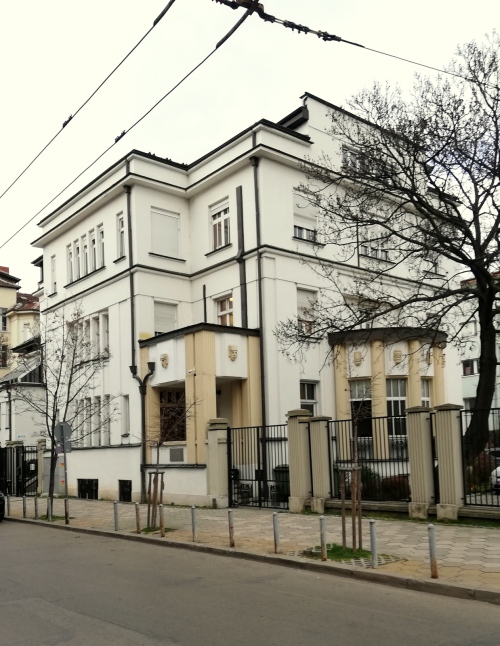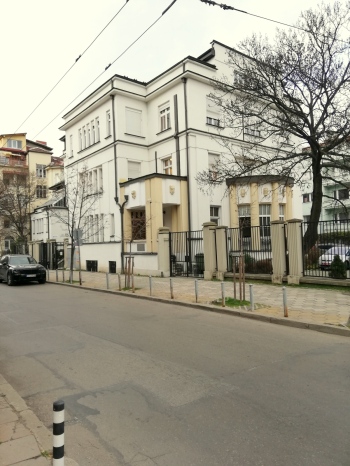Palaveev's house
Location / GPS: (42.69576387102193, 23.338039084847914)
Objects nearby: The doctor's garden
Public object / Private object: Membership
 Palaveev's house
Palaveev's houseDoncho Palaveev is one of the great Bulgarian tobacco tycoons in the twentieth century. Having amassed considerable wealth, in the early 1920s Palaveev built a representative home for his family at the intersection of Oborishte and Krakra streets. The magnificent 4-storey Art Deco building is the work of renowned architects Yordanov and Ovcharov and is included in the list of national cultural monuments. It was built in 1922 and now houses the British Council, the embassies of the Kingdom of the Netherlands and the Republic of Croatia.
The house has a representative main entrance, terrace, winter garden, spacious staircase, acacia paneling. The heads of Roman deities on the façade are impressive. Of interest are the ceramic fireplace, oak paneling and lighting fixtures in the house. The white stone building remains intact after the bombing of Sofia during World War II. At the same time, it became the headquarters of the German army, and later - the headquarters of the Soviet army. It is then used for kindergarten.
It is a curious fact that "The House of the Palaveevs" was used as a model for the Sofia house of Boris Morev in the novel "Tobacco" by Dimitar Dimov.
"Irina's eyes lit up the spacious living room, the large and long guest dining room, a lounge, the winter garden… Concealed lighting, shiny geometric surfaces of acacia, silk and velvet with harmoniously combined colors gave the whole atmosphere something fabulous." "Tobacco “, 1951
Sources:
Source 1
Source 1
Source 1

